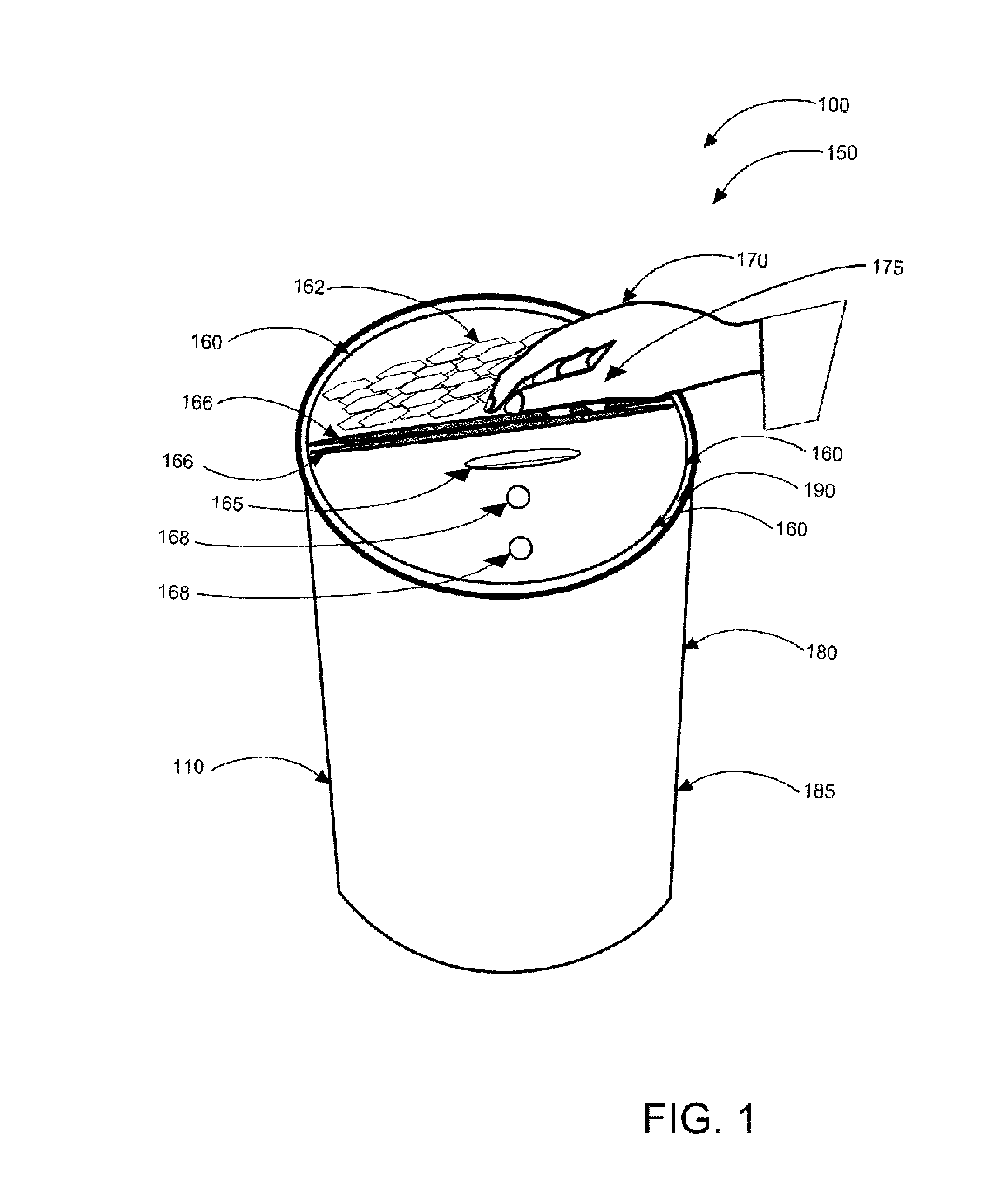Decorative sort can recycling system
a recycling system and decorative technology, applied in the field of storage containers, can solve the problems of lack of education about recycling
- Summary
- Abstract
- Description
- Claims
- Application Information
AI Technical Summary
Benefits of technology
Problems solved by technology
Method used
Image
Examples
Embodiment Construction
[0031]As discussed above, embodiments of the present invention relate to a recycle can device and more particularly to a refuse container system as used to improve the storage and removal of recyclable and disposable refuse.
[0032]Generally speaking, the refuse container system along with the outer receptacle and two nestable and duplicate interior recycle can inserts provides households with a suitable means for separating their recyclable refuse from their disposable refuse in every room. The invention is preferably comprised of a tapered cylindrical version. Within the device are stored two nestable and duplicate interior recycle can inserts; one interior recycle can insert may be used to store recyclable refuse and the second interior recycle can insert may be used to store disposable refuse (or vice versa). Alternately, they may both be used for trash or both for recyclables. Various embodiments may comprise more than two inserts. Each of the interior recycle can inserts prefera...
PUM
| Property | Measurement | Unit |
|---|---|---|
| diameter | aaaaa | aaaaa |
| diameter | aaaaa | aaaaa |
| distance | aaaaa | aaaaa |
Abstract
Description
Claims
Application Information
 Login to View More
Login to View More - R&D
- Intellectual Property
- Life Sciences
- Materials
- Tech Scout
- Unparalleled Data Quality
- Higher Quality Content
- 60% Fewer Hallucinations
Browse by: Latest US Patents, China's latest patents, Technical Efficacy Thesaurus, Application Domain, Technology Topic, Popular Technical Reports.
© 2025 PatSnap. All rights reserved.Legal|Privacy policy|Modern Slavery Act Transparency Statement|Sitemap|About US| Contact US: help@patsnap.com



